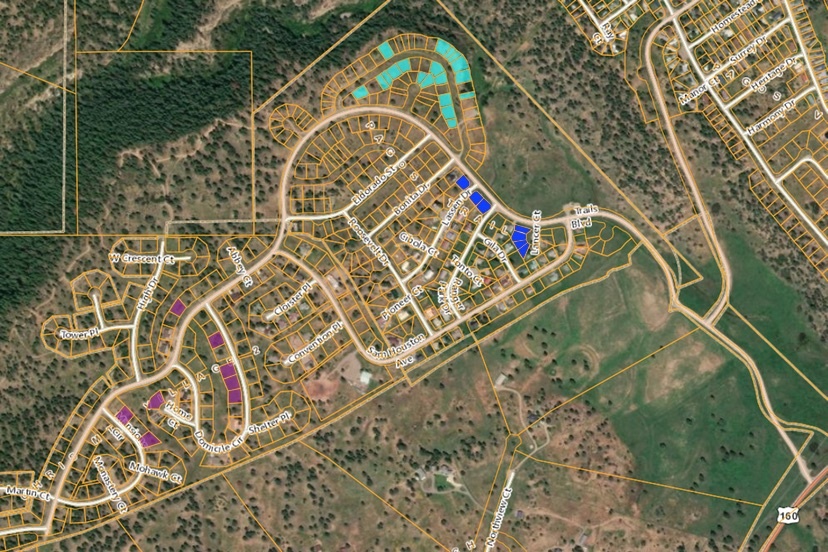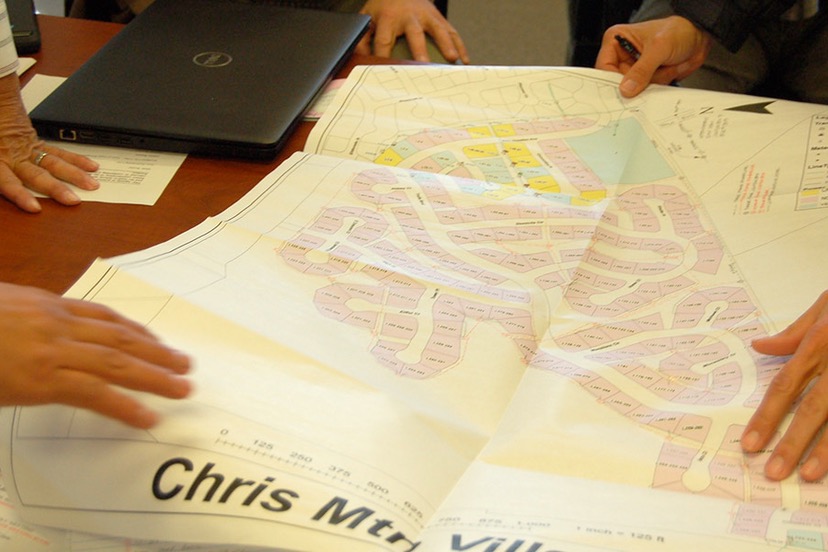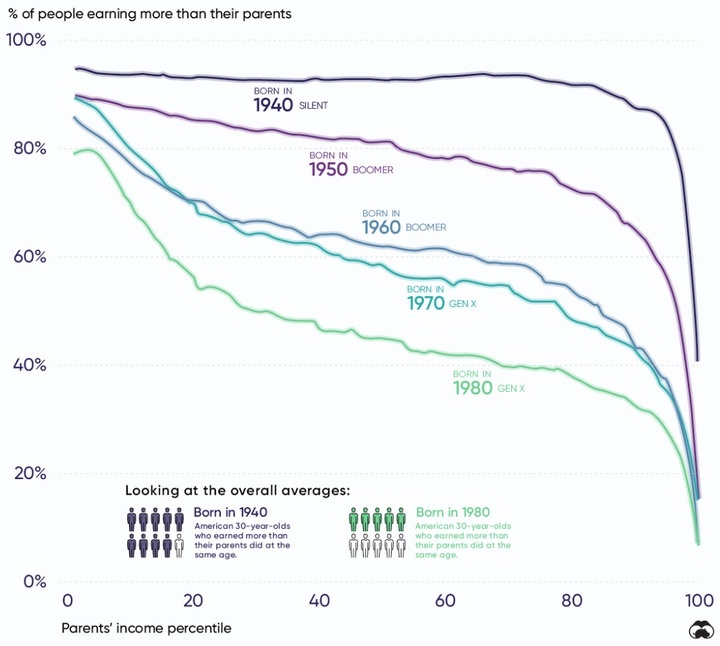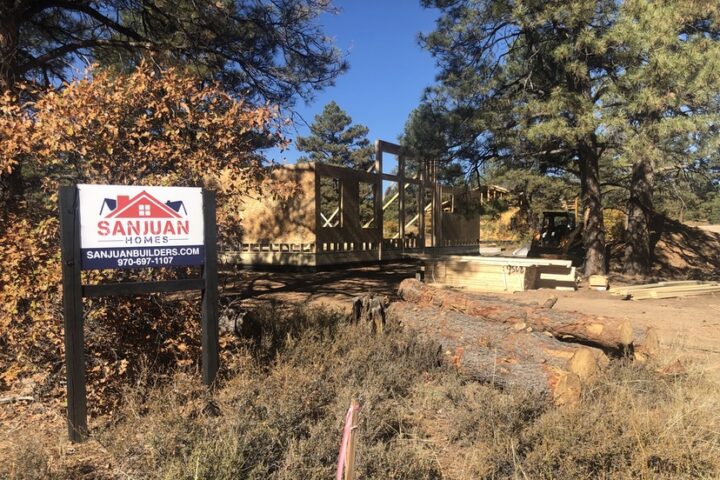When I finished composing my editorial for yesterday morning — ‘Flip-Flops at the BOCC, and Other Controversies, Part Four’ — I found myself thinking about the future of Pagosa Springs.
How will our community look and function, in 20 years? Or 30 years? At the rate things are going…?
I attended a meeting of the Pagosa Springs Community Development Corporation (CDC) board of directors, last week, and heard about some ambitious plans to promote the construction of workforce housing, if we can manage to get our hands on millions of dollars in state grant funding, newly available through Proposition 123. Prop 123 was approved by Colorado voters last November.
The location for the proposed workforce housing, as discussed by the CDC board, would be the Chris Mountain II subdivision, at the far west end of town.
Not as far west as Aspen Springs, which has been referred to, by at least one Daily Post columnist, as “Outlaw Land”…
The people of Colorado know that we have a housing crisis going on, and a majority of voters believed, last year, that Prop 123 was a reasonable approach to addressing the crisis. A majority of the voters are comfortable with seeing some of their tax money supporting housing projects specifically aimed at the folks in the ‘less wealthy’ half of the economy.
Perhaps the voters understand that the folks in the ‘less wealthy’ half of the economy are the ones who actually keep the economy operating?
…While those of us, who are retired, go hiking and play golf and collect our pensions? I’m speaking here as a retired person with a couple of interesting (if unusual) hobbies: journalism and community activism. Mainly because I don’t like golf or hiking.
I was not a retired person when we moved to Pagosa in 1993, however. Clarissa and I needed to find jobs, and a place to live that we could afford. Fortunately, a family could find both of those things in Pagosa, in 1993.
The community has changed somewhat since. Not too dramatically, but somewhat. For instance, most of the families in my downtown neighborhood are the same ones who lived here in 1993.
The parts of Archuleta County that have changed most radically are located to the west of downtown, and to the south of downtown. Some of those suburban subdivisions are blessed with ‘CC&Rs’.
Covenants, Conditions & Restrictions.
Did I just say “blessed with”?
I meant, “cursed with”.
In most cases, the CC&Rs that define allowable uses of private property, in our Archuleta County subdivisions, were written in the 1970s. The overall American economy has changed significantly since 1970, but the CC&Rs have not.
One way that the national economy has changed? I found this graph online, showing (statistically) the decline in ‘upward mobility’ over five decades, using data from Opportunity Insights. Most middle-class American kids born in 1980 are earning lower wages than their parents did at the same age.
Which is to say, young people cannot afford the homes their parents could afford. If we want to address America’s changed economic conditions, we must change the way neighborhoods function.
But the CC&Rs that control the subdivisions in Pagosa Springs are nearly impossible to change. More about that in a moment.
For those of us who live downtown, within the Town boundaries, our building codes are defined by an elected Town Council. The Council can, by a majority vote, amend the building codes to accommodate changing economic and social conditions.
The situation is rather different for the subdivisions that belong to the Pagosa Lakes Property Owners Association, the PLPOA. It’s where the largest number of community resident live.
One of those subdivisions, for example, is Chris Mountain II, and as with other PLPOA subdivisions, the land uses are controlled by 50-year-old CC&Rs, written in a way that made sense to the developers in 1970, but now work to prevent us from effectively meeting the needs of the Pagosa Springs community in 2023.
For example. According to preliminary research into the CC&Rs that control development in Chris Mountain II, you cannot build a duplex on your property in Chris Mountain. You cannot build townhomes in Chris Mountain. You cannot build apartments in Chris Mountain. You cannot install a mobile home in Chris Mountain. You are allowed one type of structure, and one type only: a freestanding single family home.
There are certainly people who can afford a new, single family home in 2023. Not many of them are working for the Pagosa tourism industry, however… or, working for anyone else in Pagosa, for that matter.
The Chris Mountain CC&Rs can be changed through a difficult election process, but they cannot be made more lenient. They can only be made more restrictive.
Which is why I use the term “cursed”.
Most of the lots in Chris Mountain currently sit vacant, although homes are now popping up, here and there. The relatively undeveloped state of the subdivision is related to difficult soils (read: a few inches of soil over solid rock) and the fact that the developer never installed the utilities, but sold the lots anyway (in apparent violation of local and state law?)
And of course, the CC&Rs, as well.
We are listening here to CDC Executive Director Emily Lashbrooke addressing her board of directors last week:
“Okay. Workforce housing project. This is our big topic today… Archuleta County donated another 27 lots to our workforce housing project…out in Chris Mountain II…”
The County had previously donated 8 ‘tax lien’ parcels to the CDC, shown in purple in the map below.
You can click the map for a larger view.

The turquoise and blue lots are the new donations, from the BOCC. We will discuss the various colors, later on.
“So today I want to talk to you about, kind of, what’s rolling around in my head, of a strategy for building 35 houses. And how to we know exactly what we need to build?”
Interesting questions. The non-profit organization, Pagosa Housing Partners (PHP), surveyed employees working in local businesses and governments in 2018, and then again in 2021. I helped write and distribute those surveys, and also helped PHP analyze the results, which were provided to the Town and County, free of charge.
I was sitting in the CDC meeting last week, and I probably could have told Ms. Lashbrooke what types of housing we need, most desperately, in Pagosa Springs. But no one asked me.
Which I completely understand. The plan is to hire an out-of-town consultant for $80,000.
There was a time in Pagosa — back in 1993, in fact — when $80,000 could buy a decent house.




